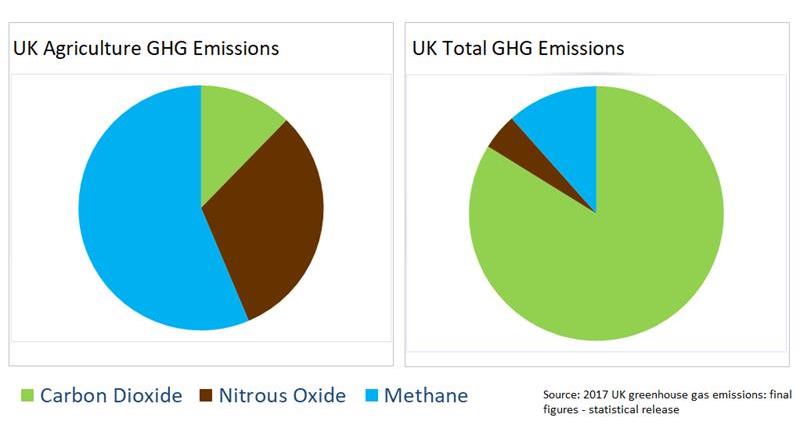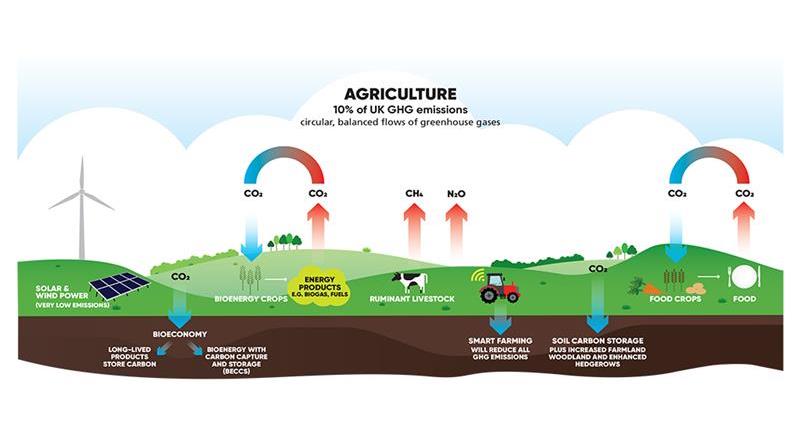Climate Change and Greenhouse Gases
Greenhouse gases (GHGs) in the Earth’s atmosphere trap the sun’s heat, stopping it from escaping back into space.
Many of these gases occur naturally, but human activity is increasing the concentrations of some of them in the atmosphere, resulting in global warming and climate change.
Agricultural GHG Emissions
GHGs fall into two categories; the fluorinated gases which account for around 2% of GHGs in the atmosphere, and the non‑fluorinated gases with account for the other 98%.
The non‑fluorinated gases are also those emitted by many agricultural practices: carbon dioxide (CO2), methane (CH4) and nitrous oxide (N2O).
- Carbon dioxide (CO2) is the primary greenhouse gas, accounting for about three‑quarters of emissions.
It can linger in the atmosphere for thousands of years and is mainly produced by burning organic materials: coal, oil, gas, wood, and solid waste. - Methane (CH4) accounts for about 16 percent of all greenhouse gas emissions. It is the main component of natural gas and is also produced by the digestive systems of grazing livestock.
Methane doesn’t stay in the atmosphere as long as a carbon dioxide (c. 12 years) but it is more than 80 times more potent over two decades; it has a much higher impact on global warming and climate change over a shorter time period. - Nitrous Oxide (N2O) only accounts for around six percent of global emissions but it is 264 times more potent than carbon dioxide over 20 years, and its lifetime in the atmosphere exceeds a century, according to the IPCC.
Livestock, fertilizer, manure, and burning of agricultural residues and fuel are the biggest sources of nitrous oxide emissions.

Emissions from UK farms currently account for around 10% of UK GHG emissions.
However, in contrast to the rest of the economy, only a tenth of this is carbon dioxide (CO2).
More than half of agricultural GHG emissions are methane (CH4) and more than a third are nitrous oxide (N2O).
Reducing these emissions is more difficult than cutting carbon dioxide, because they result from complex natural soil and animal microbial processes.
